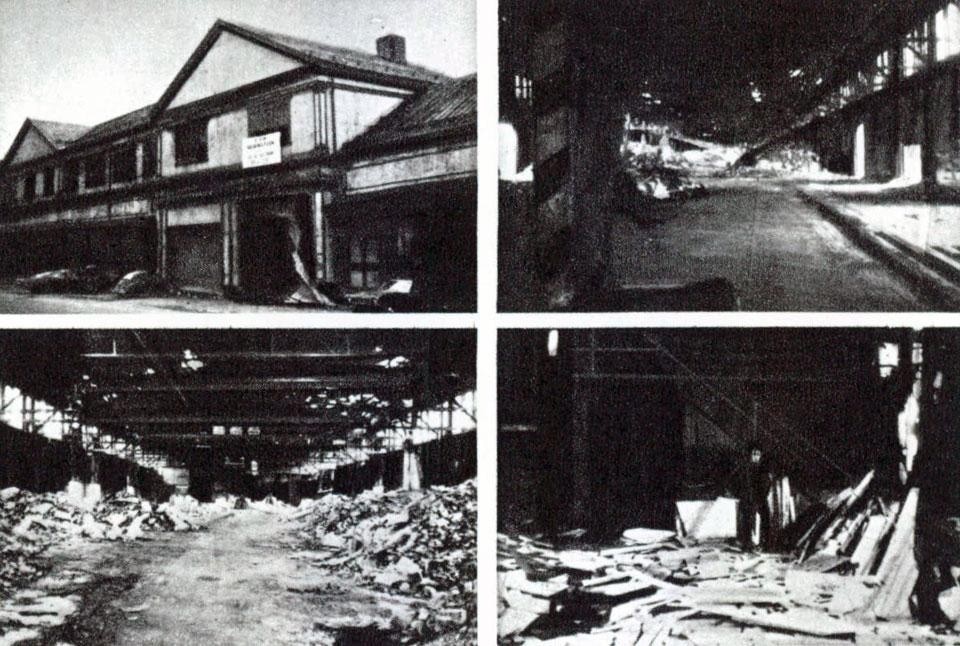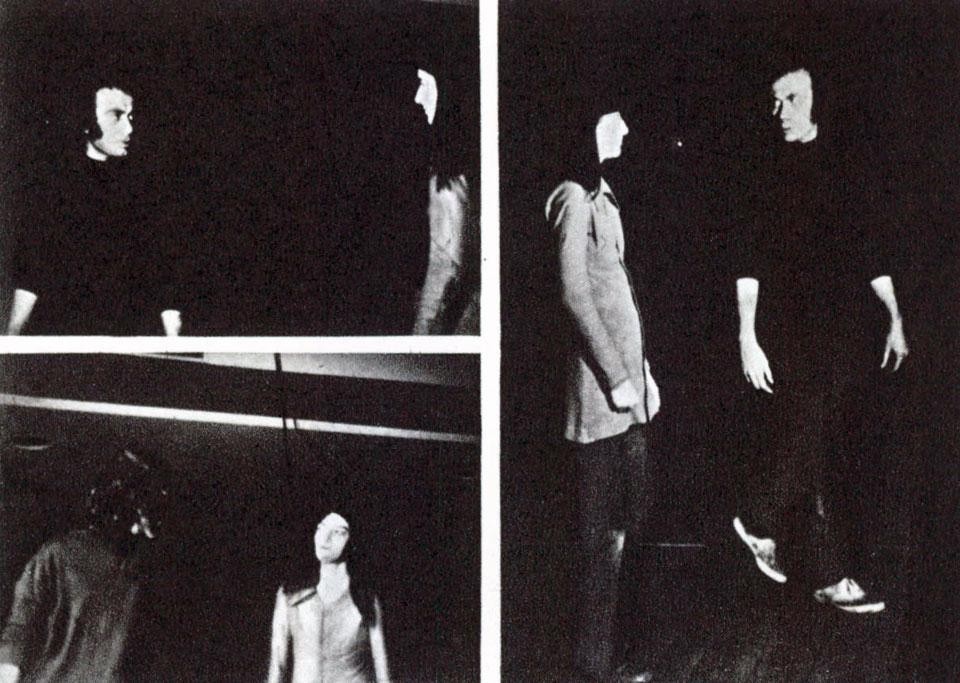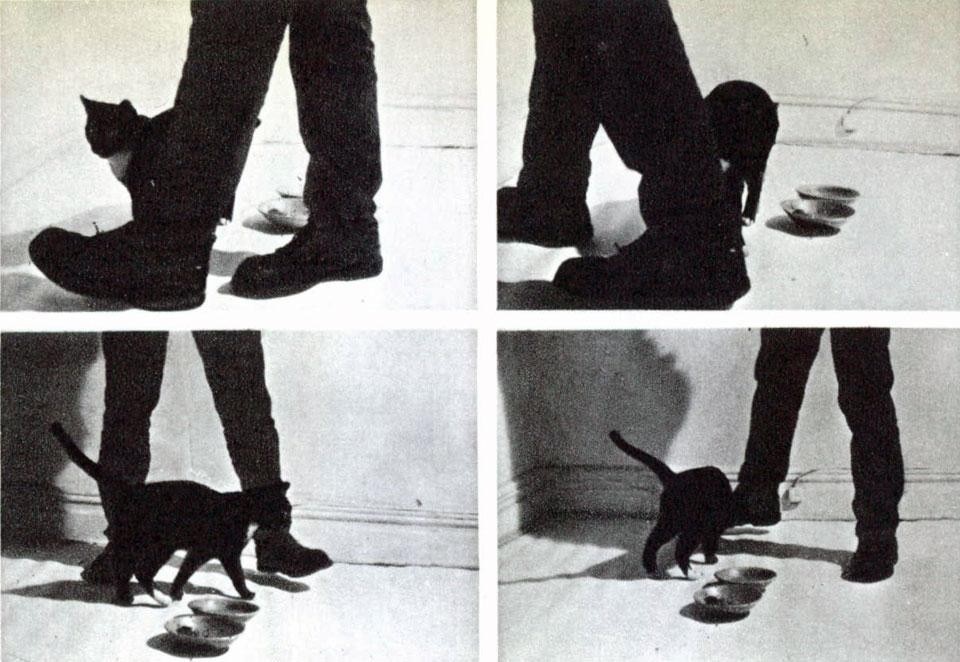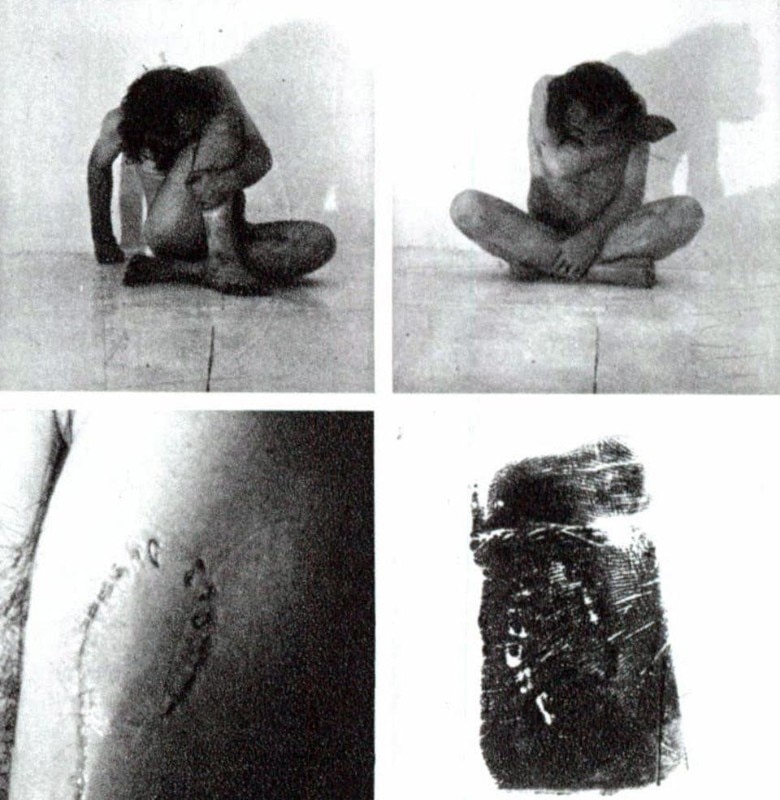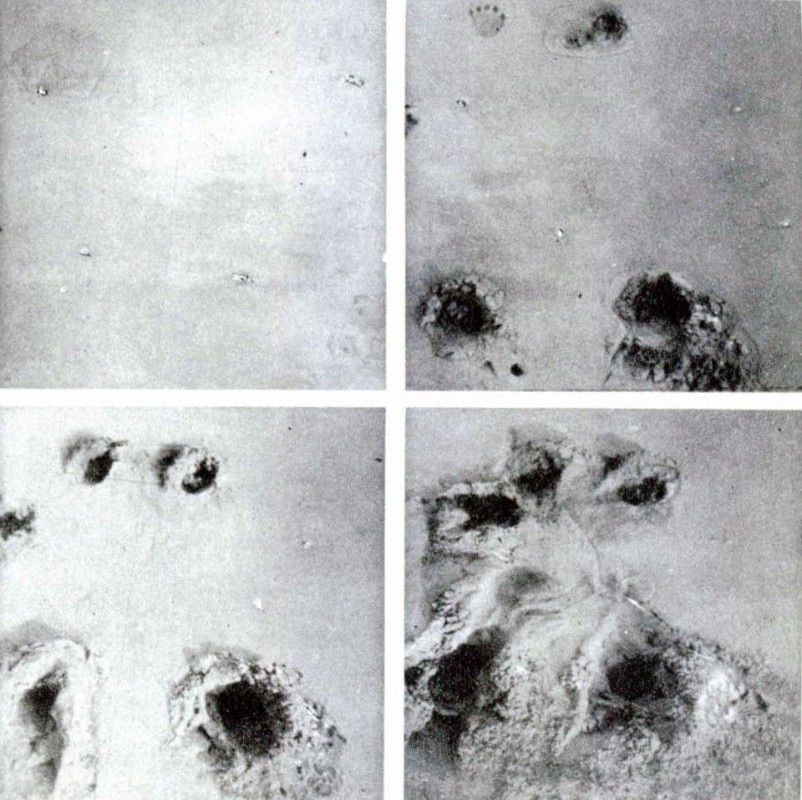This article was originally published in Domus 509 / April 1972
Vito Acconci
In order to constantly and determinedly flee from the representative tradition and from esthetism as a form of communication and also in order not to share the responsibility of their work and craft with the expectations and understanding of the bourgeois spectator, always ready to esthetise and thereby consume every fresh energy to be found in artistic research, the artistic movements of the last five years have tended systematically to avoid all linguistic or attitudinal homogeneity.
They have gone from written language to nature, from mental operations to concrete physical encounter, from the "stated" to the "nonstated ", from the organic to the ecological, from the object to the work that totally disappears. They have eliminated the "spectator as corpse" and they have sought the conscious and physical involvement of a public that was formerly passive and homogeneous in order once again to lead it to the trauma of art and to wake it up out of stupidity.
Naturally enough, the society of the spectator reflects what it wants to of the revolutionary action of the artist in order to castrate it and to integrate it as consumption into its system, and for this reason the conflict or encounter is once again directing itself towards the exchange of goods and the values of the market. The search for an "encounter" nonetheless remains the fulcrum of the effort and this is why the last few years — from 1967 to the present — have seen any number of artists involved in an attempt to establish a contact and a confrontation not only with thoughts but rather in such a way as to involve the entirety of human existence, from instinct to unconscious motivation. The discipline of experience has thus become the only way in which to escape from the dictatorship of the language of books — a dictatorship that has produced a language that is censored, hidden and repressed, puritanical and aseptic. This superior, official, and computerized language is being every more thoroughly challenged by the slang of the body.
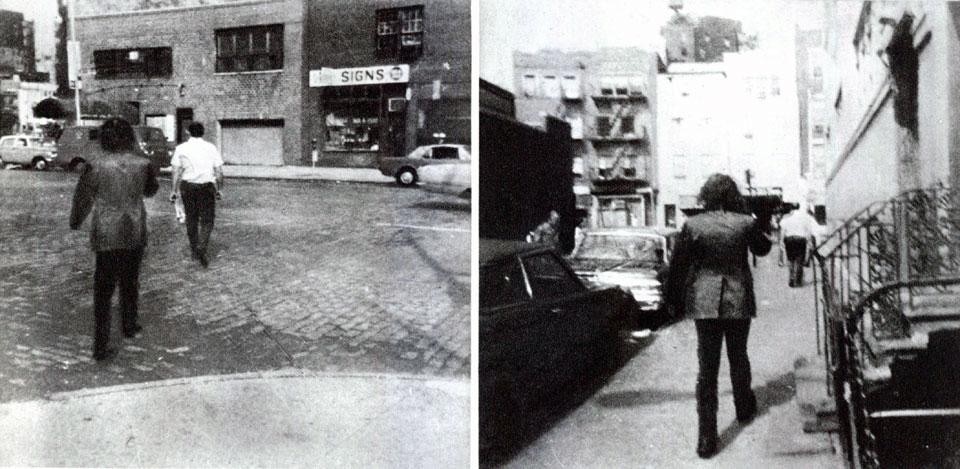
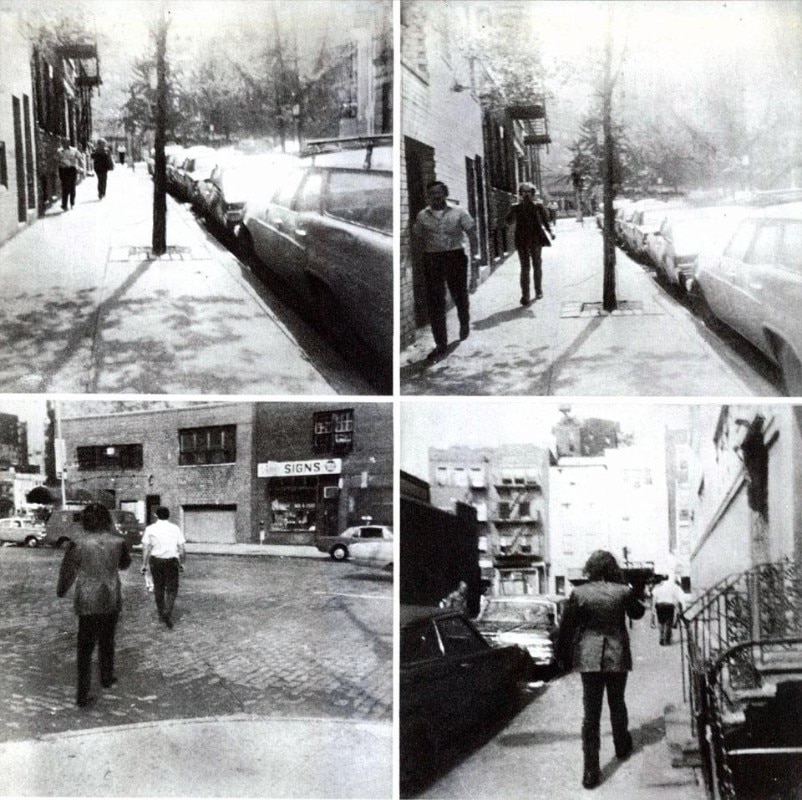
In fact, the body has a language that is crude, violent, and vulgar. It is spontaneous and does not elaborate. It proposes the affirmation of slangs as opposed to the disinfected language of the university
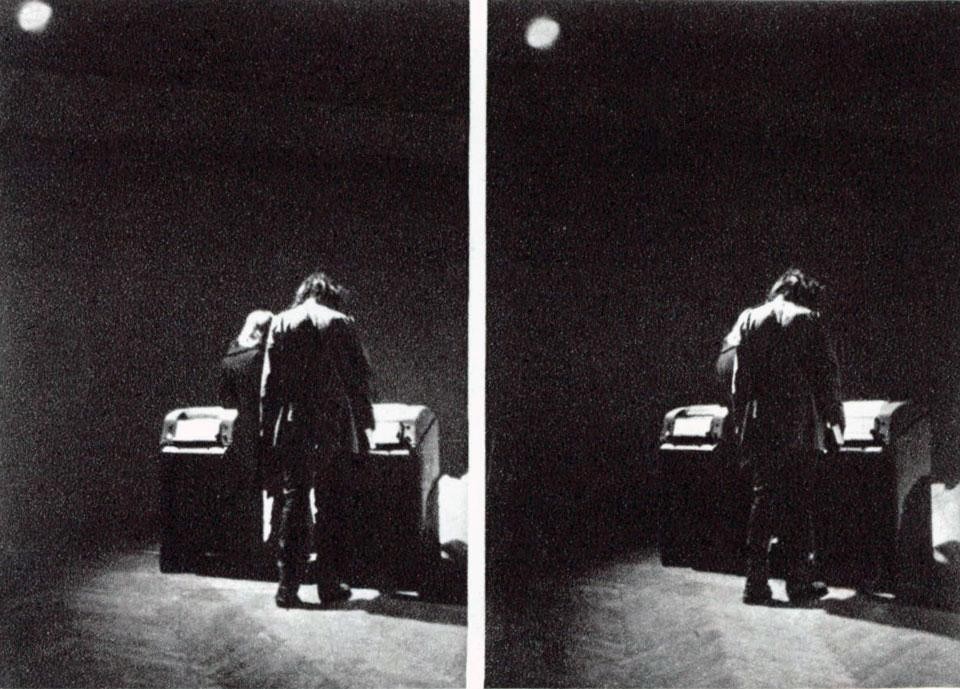
What we have here is direct contact between two poles of a dialog that takes place between two opposed "narcisisms ". It is never based upon observation and thus the works of Acconci since 1970 always tend to involve or to assume "the other", and evidently not with a language that is either formal or inhibited but rather through a vitalistic and organic tension that excludes mental mediation in order to include the component of experience. This involvement is developed with the gaze of the eyes in Performance Test, a contact between looking and being looked at for 15 seconds. The same involvement takes place in terms of direct sensitive communication in Rubbings, a film in which Acconci crushes cockroaches on his own skin to the point of rubbing them away entirely. This is a performance that arouses extreme disgust.
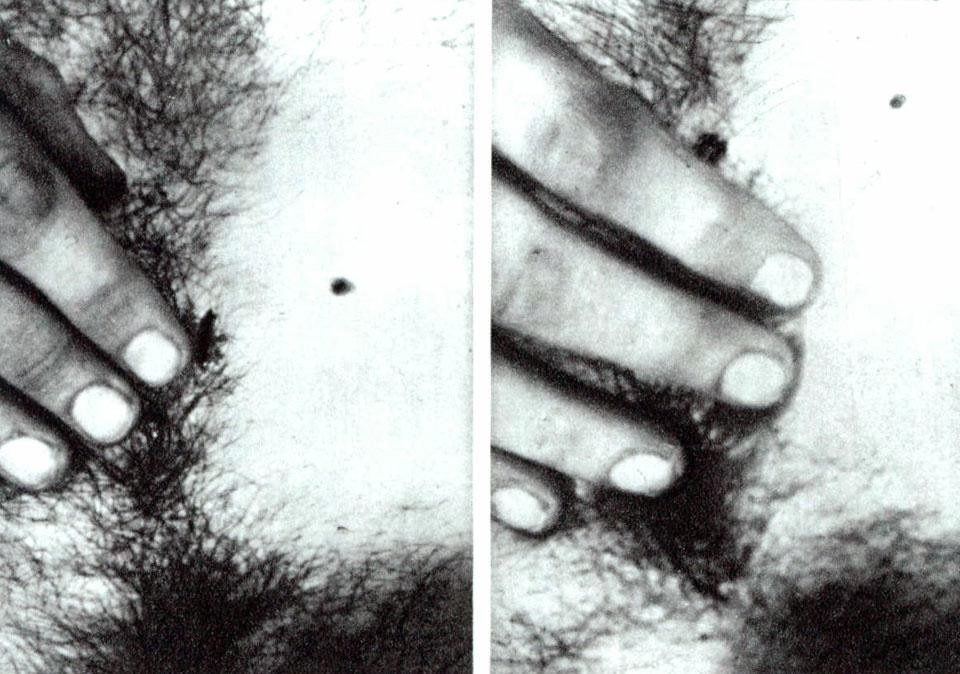
Intuition is in fact the most correct system for the "transmission" of signs from the body to the external world, and these signs can consist of no more than simple physical presence, as in Room Situation, where the action is to stand in the proximity of another person and to move into his "territoriality" and private space in order to crowd him and make him feel the invasion of his own physical privacy as effected by another body. A "passage" of territoriality physically takes place in Applications with the transferal of a lipstick mark that a woman has placed on the chest of the first performer onto the back of the second. This is an application of private signs that is first the acquisition of a color and then the transference of this color to another body. The contact between the three individuals is entirely physical, no words are spoken, the experience of flesh on flesh is not repeatable, and thus the communication is unique, and neither generalized nor generalizable.
